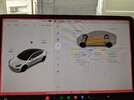If you leave it overnight sleeping with sentry off with single digit, does not need to be sub sero, and then charge to 90% and leave it sleeping for at least 2-3hrs?
And following days tjexsame but different SOC’s?
Yes, always sentry OFF during night. Yes sleeping sub zero and sleeping over 90%.
Following days , if the trend was Donward, it continued to be downward, If the trend was Upward, it continued to be Upward regardless of actions I made letting it sleep at low and high SOC.
Basically I'm usually low SOC. I charge every 2 or 3 days from 10-15% to 55-60% (sometimes less thatn 10% sometime in the 25%).You have been at quite low SOC all the time?
Only Supercharging, do you get a full preheat each time?
The car was a 2021 M3P from what date?
When I decide to charge it (supercharge it because I still have 80.000 free superchargers km s from referral program) I'm at 25% but going to Supercharger I allow it to pre-heat loosing 5 or 6 or 7% in 12 km (the distance between my home and the local SuC V3).
It's a MARCH 2021 Performance model.
I disagree on this. I have always better NFP variations WHEN I see a lower Soc after a rest.If your charging schedule produce a rolercoaster I suspect you could get a continued rolercoaster after a BMS calib.
I havent really bothered with BMS calibration, except for the two sleeps at -1.8/-2% to try to lower the NFP.
I guess other ppl is better of tipping about this, or follow that thread with ”how I got half my lost range back”.
No, just used one drive as an example, arrived at work after a 240km drive and did read 32%. After a days sleep it had 34%. A sign that the BMS was off on the pessimistic side.
I had a similar arriving at 52%, leaving 9 hours later I had 54%.
If the SOC adjusts down after longer drives following a sleep, it looks to me like the BMS is overestimating the capacity (if not too cold outside so the battery wont cool off very much).
I think it is possible to calculate the whereabouts of the true SOC if we know initial SOC, the kWh used, the arrival SOC and the after sleep SOC.
This is normal .
An exaggerated example:
Say 50% Soc and 240 km left. The car rests and you find it at 80% with the same 240 km range.
It means that the car losts NFP.
Instead if you find it at 20% and the km left are the same 240 , the NFP will go high.
Today I left it at 58% (after charging it) , I took it 3,5 hours later at 56,5% , the NFP went from 77 to 77,5.



